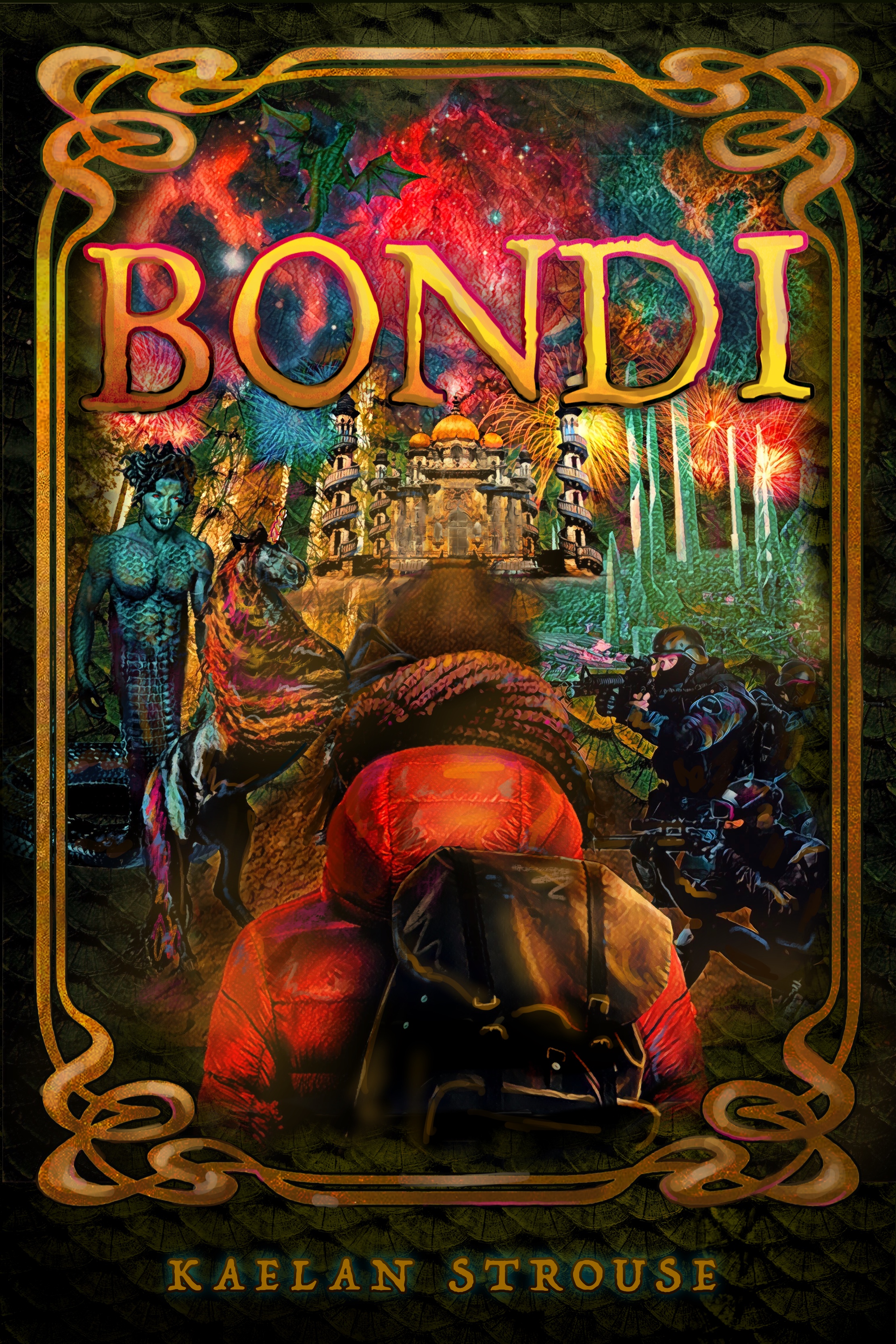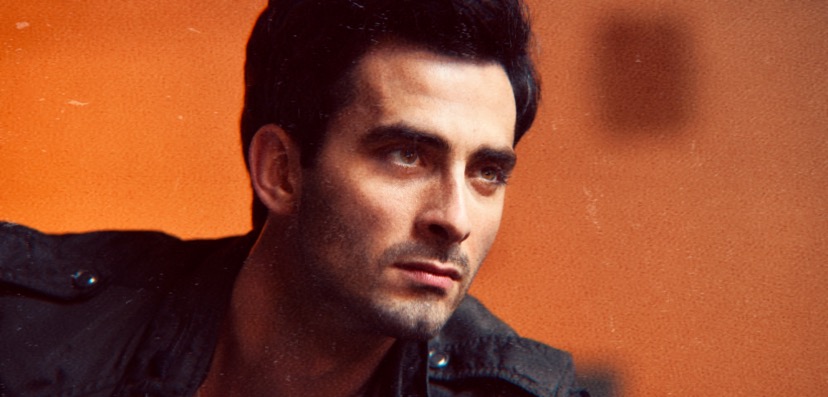On one glorious morning in the coming months, you are going to open your phone, discover a notification for your inbox app, and see a link to be able to download my first novel, “Bondi,” for your perus-ment (perusal+enjoyment). Until that glowing day arrives, I want to engage with you a story about the origin of “Bondi” and why I needed to write it.
For those of you who know a bit of my personal history, you know that I spent a long time growing into self-acceptance. In particular, I really struggled to accept my sexuality. Until shortly after my twenty-fifth birthday, I had never been kissed, never gone on a real date (at least one that I didn’t get stood up), and had come to think of myself as asexual. I just wasn’t interested in anybody, and no one seemed all that interested in me.
That changed one fateful afternoon when my then-roommate took it upon herself to sign me up for an online matchmaking site and arrange a few dates while pretending to be me. At her insistence, she listed me as bisexual and scheduled coffees and dinners with both men and women. I was aghast at her audacity but agreed to follow through.
Many of those dates ended rather comically (like the one with the dominatrix who wanted to show me her sex toy collection while she talked about her seizures and heart condition); but over the coming weeks, I came to discover that I was not in fact asexual. Instead, I had a rather clear-cut same-sex attraction, but I had somehow been so ashamed of the possibility in my earlier years that I suppressed that knowledge even from myself.
I remember walking down Bryn Mawr Street in the Edgewater neighborhood of Chicago one early evening and imagining the following scene. I saw myself as a dragon who had convinced himself that he was human—each morning he bundled his tail into his pants, bound his wings, and dressed in as human-ish clothes as possible to hide his true identity—even from himself. Then, one day, someone comes up to him and says, “Do you know you’re a dragon? It’s alright if you are—you can unwind the bindings that are keeping all your dragon-bits strapped down.”
Much to his shock, he looks down and for the first time acknowledges that this person was correct. He is, in fact, a dragon! He had almost forgotten because they had spent so long hiding it.
The question begs to be asked, “Why was being queer such a terrifying thought for you, Kaelan? Why were you so terrified to let yourself be as you were?”
I don’t have an answer to that excellent question. My parents were never openly homophobic—at least not any more than the general culture was in the nineties. And they were very affirming that they would love and support me, no matter how I grew up or turned out.
The biggest struggle was with my peers. I was bullied horrendously from second grade all the way up through college. A lot of the jeers and taunts were around being gay. ‘Faggot,’ ‘Pu*sy,’ ‘Fudge-Packer,” and the like were hurled at me dozens of times every single day. One morning I awoke to find my home egged—the proteins of the whites stripping the paint of the siding of our house—and the word ‘Fag’ emblazoned on our sidewalk in nail polish. It took nearly two-decades for that nail polish to finally wash away with the rain.
I don’t know why there was such a queer-bashing vibe in my schools—it probably has to do with the excess of toxic masculinity that was rampant in suburban Chicago. But to my young mind, I figured that if the hatred and torment were this bad if my peers only supposed I was same-sex oriented, it would get exponentially worse if I actually came out.
I am sure that there were other factors at play that egged people on to target me—inauthenticity was a big issue, I know; it was tough for me to come across as genuine and grounded because I was so afraid of being myself. Regardless, many of my formative years were spent in torment, and it is still a struggle—now in my thirties—to really cultivate acceptance and self-worth.
This is why I was inspired to write a story about a young, half-dragon who grows up in a town full of humans. He is the only mythical in his neighborhood, and the other teens are ruthless as they humiliate him day-in and day-out for what he cannot change. Each morning, he binds his wings, tucks his tail in his brief, and tries to disappear. But it’s never good enough. The door of his locker is three-shades lighter than everyone else’s because the janitor has had to scrub the hate-messages off so often. His lunch almost always ends up stomped on, spat on, or thrown in the trash because the other students won’t let him eat. They push him down the stairs, replace his snacks with animal kibble, and try to light him on fire on the school bus.
I wish I could say that most of these were fictitious events invented by my imagination, but they are not—many of the ways Bondi gets tortured are too real. I wrote this book so everyone could empathize with the horrors of bullying and see the real trauma it creates. More than that, however, I want to illustrate a path for those who have been marginalized, like Bondi. How it is possible to find community, overcome your shame, and learn to bravely stand out. To show that each life has value, and all of us have worth.
There are alarming statistics about teen mental health coming to the forefront. Three out of five trans-men teens will seriously consider suicide. Fifty percent of young black men who have sex with men will develop HIV in their lifetime—because there is so much societally taught shame about them being who they are.
My book strives to offer encouragement, reassurance, and inclusion. I hope to inspire everyone to find more tolerance for those who are different—whether that’s because they’re neurodivergent, ability-limited, trans, queer, a refuge, a person of color…whomever. We are all beautiful human beings living out this crazy, chaotic experience—and, to quote Dan Savage, “it gets better.”
I hope this gives you a little insight into the process of why and how I wrote “Bondi.” While it deals with some heavy topics, the book is ultimately a thrilling adventure with a strong message of hope and healing. Bondi finds his way out of his inner-struggle and arrives at a place where he is more self-accepting, included, and in a place where he finds true belonging. Of course, it is only book-one of a multi-book series that I have planned, so he still has more room to grow—but he has already come a long way.
Thank you for allowing me to share some of my inner-journey with you. I hope you will download, read, and share Bondi with someone you know who needs to hear his message of self-acceptance and tolerance when it gets released!


My sweet Kaelan, your beautiful, but sad sorry, brought tears to my eyes. Small minded, ignorant and insecure people torment others because they are to narrow minded to see the beautiful individuality in each person – sad, but true!
Look at the amazing, whole, secure, talented, good hearted, bright soul that you have grown into – they say pain causes growth – and all of the pain and torment you endured, maybe helped you become the fabulous self God meant you to be!
You are loved and accepted by so many of your family and friends – always and forever 🙂
i am so truly proud of you and the person who you’ve grown into ! Your mom, me and Felicia, used to always tease and say, Yes, that Christopher is going to be the one who does something fabulous with his life – not our boys (haha)
and we were right! Look at your soar!!!
Love you,
Cathy Rullo